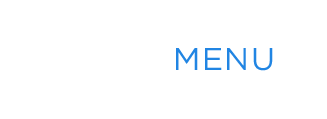For many of us, the thought of conflict has a negative connotation. We associate it with strong emotions, argumentative exchanges, ill feelings, and maybe damaged relationships. Therefore, we avoid it. A conflict can strengthen communications and relationships when effectively resolved rather than avoided. Moreover, actively engaging in positive, productive conflict can build stronger teams and identify more effective solutions to problems and opportunities. But let’s start with resolving conflicts.
One of the most effective approaches to resolving conflicts is the book, Crucial Conversations by Patterson, Grenny, McMillan and Switzler. This book has taught me the following principles and practices for effectively resolving conflict:
-
Begin with clearly understanding the desired outcome for the issue or situation that triggered the conflict. This is because we navigate through conflict, not just for the sake of the conflict, but because we need to get to the desired outcome.
-
Start with the heart. In other words, we are in the right emotional state and have identified what we want for ourselves, the other person(s) and the relationship(s).
-
Take personal ownership of our part in the conflict. As stated in the quote from Ka-Ching, “If you want to make the world a better place take a look at yourself and make the change!”
-
Create and maintain an environment of safety so that open dialogue can and will occur. Only when communications are open can everything be put on the table.
-
Separate the facts of the situation from my stories (perceptions) about it. All gain agreement in the crucial conversation of which elements are facts and which are stories. Then make sure both facts and stories are on the table from all concerned parties.
-
Follow the ‘STATE Model’ for getting the facts and the stories in the open and onto the table—Share and confirm the facts, Tell your story (perspective), and Ask for the other person’s path (story or perspective). Do this Talking tentatively to indicate an openness to the other person’s point of view and Encourage testing or in other words exploring alternate ideas for solutions.
-
Move together to action and desired results.
Now for the alternate view of the conflict, i.e., it can be a good thing to resolve and engage actively.
When individuals in a relationship, personal or professional, trust one another to the point of being able to be vulnerable. In this type of relationship, alternate perspectives are openly invited because all parties know that everyone is respected, valued, and focused on a shared positive outcome. It is recognized that these differing perspectives on the facts bring greater insight, providing more complete information and visibility into the issue at hand. Therefore, increasing the probability of getting to the root cause and a better solution.
In The Five Dysfunctions of a Team, Patrick Lencioni identifies the lack of positive productive conflict as the second dysfunction of any team. In contrast, the existence of such conflict is shown to be the second essential attribute in building a high-performance team. Therefore, the right type of conflict can be positive and productive and something to be actively engaged in.
We all benefit when we realize that conflict should not be avoided. Instead, conflict needs to be resolved and where possible, positively, and productively engaged.
—
Ready to join an award-winning culture of thriving people? Visit our careers page to learn how you can join our team!
We’re on the search for more senior account managers. If this interview resonated with you, apply at this link: https://www.englandlogistics.com/search-all-available-jobs/



